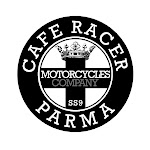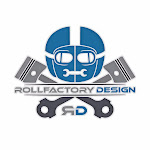1958 BMW 507 Roadster Series II
By the mid-1950s, BMW began offering true luxury models equipped with a new dual-carburetted V-8 engine. But as its reputation was largely linked to economy cars like the Isetta, BMW sought a game-changing model that would project a new identity.
The resulting 507 roadster featured an advanced box-frame chassis equipped with upgraded suspensions, four-speed synchromesh gearbox, and Alfin drum brakes.
Most famously, the 507 was clothed with breathtaking lightweight alloy coachwork penned by Count Albrecht Goertz, a timeless design, punctuated by sensual curves, that ranks among the most significant open sports cars of the 50’s.
The 507 frame was a shortened 503 frame, the wheelbase having been reduced from 2,835 millimetres to 2,480 millimetres. Overall length was 4,385 millimetres and overall height was 1,257 millimetres. Curb weight was about 1,330 kilograms. The body was almost entirely hand-formed of aluminium and no two models were exactly the same. 11 cars were sold with an optional hand-fabricated removable hardtop. Because of the car-to-car differences, each hardtop effectively fits only the car for which it was made.
Front suspension was parallel double wishbones, with torsion bar springs and an anti-roll bar. Rear suspension had a live axle, also sprung by torsion bars, and located by a Panhard rod and a central, transverse A-arm to control acceleration and braking forces. Brakes were Alfin drum brakes of 284.5 mm diameter, and power brakes were optional. Late-model 507s had front Girling disc brakes & Pirelli 185VR16 Cinturato radial tyres.
The engine was the famous BMW's aluminium alloy OHV V8, of 3,168 cubic centimetres displacement, with pushrod-operated overhead valves. It had two Zenith 32NDIX two-barrel carburetors, a chain-driven oil pump, high-lift cams, a different spark advance curve, polished combustion chamber surfaces, and a compression ratio of 7.8:1 yielding 150 metric horsepower (110 kW) at 5,000 rpm. It was mated to a close ratio four-speed manual transmission. The standard rear-end ratio was 3.70:1, but ratios of 3.42:1 and 3.90:1 were optional.
A contemporary road test of a 507 with the standard 3.70:1 final drive was reported in Motor Revue, stating a 0–100 km/h acceleration time of 11.1 seconds and a top speed of 122 mph (approx 200 km/h).
Just 252 507s were sold between 1956 and 1959. Owned by celebrities ranging from Elvis Presley (who owned two of them and gave his second to Ursula Andress) to racing driver John Surtees, to the Formula One’s magnate Bernie Ecclestone, the 507 is now one of the most celebrated post-war BMW, a sublime combination of advanced engineering and elegant style.
















































No comments:
Post a Comment
Unsigned comments and comments containing links will be removed.
I commenti non firmati e quelli che contengono links saranno rimossi.